The Vulcan motorcycle is part of the kind of cruisers built and first made its debut in 1985. They are stylish and comfortable cruisers and are quite different from the sporty, recognizable Kawasaki Ninja motorcycles. Nonetheless, they have also been widely popular.
These cruisers come in different variants, ranging from 400 ccs to 2,000 cc motors, most of which are V-twins. They also hold steady in their heritage, even though the evolution of their kind over time has been keeping with the times, for which Kawasaki has shown success. Let’s explore the Kawasaki Vulcan motorcycle to see how much they have developed into what they are today.
The Vulcan motorcycle models
The Kawasaki motorcycles come in different models, as listed below.
1. Vulcan 750 series: 1984-2006
The Vulcan 750 series debuted in 1984 as a 1985 model. It was also launched worldwide as the first cruiser by Kawasaki with a V-twin engine. The Vulcan 750 series has a reliable shaft drive that was primarily found on large cruisers, a feature that made it unique to its class. The first U.S model was limited to 699 ccs due to tariffs that were imposed on engines larger than 700ccs. The engine sizes were increased to 750 ccs after the tax was lifted in 1986. The liquid-cooled DOHC V-twin produced 66 horsepower.
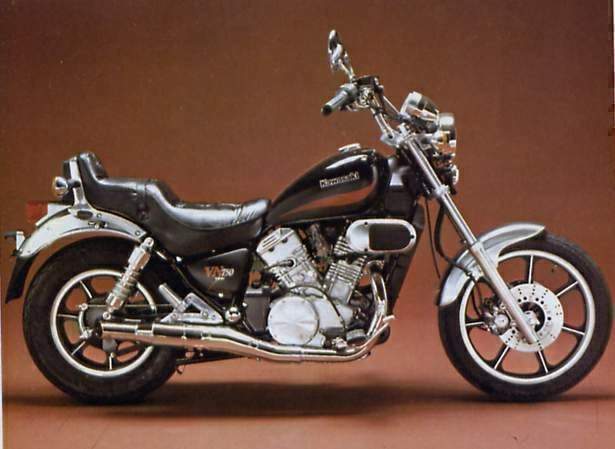
The series remained unchanged during its 22-year production. Only minor adjustments to components and paint schemes were made from time to time.
Specifications
- Engine type: 749cc, 8 valves, liquid-cooled, SOHC, 4-stroke
- Bore x stroke: 3.3 inches x 2.6 inches
- Compression ratio: 10.3:1
- Horsepower: 66/7500 KW (hp) /rpm
- Torque: 47 ft-lbs
- Fuel system: 2 x Keihin CVK34 Carburetors
2. Vulcan 400 series: 1986-2004
The Vulcan 400 debuted as an entry-level cruiser in 1986. It had a liquid-cooled twin engine with a capacity of 398 ccs. it also featured a belt drive and a six-speed transmission. This was later upgraded to a 399 cc, V-twin engine, and fitted with a chain drive.

Specifications
- Engine type: 399 ccs, air-cooled, V-twin, OHC, 4-stroke
- Bore x stroke: 2.4 inches x 2.6 inches
- Compression ratio: 9.8:1
- Horsepower: 33/8500 KW (hp)/ rpm
- Torque: 24/4500 lb-ft/rpm
- Fuel system: carburetor
3. Vulcan 500 series: 1990-2009
The Vulcan 500 motorcycle is also called the EN500A. Vulcan 500 succeeded Kawasaki 454 LTD in 1990. It featured a parallel twin engine with a capacity of 498 ccs. It also had a six-speed transmission and a belt drive. The engine of this motorcycle is almost identical to the Kawasaki Ninja 500R. The EN500A was succeeded by EN500C, also known as the Vulcan 500 LTD. The latter was upgraded to feature a final chain drive, new camshaft profiles, and improved ergonomics. In addition, it had lower compression pistons which increased low-end torque.

The production of the Vulcan 500 LTD was discontinued after the 2009 model. This was after 20 years of active production.
Specifications
- Engine type: 498 ccs, 4-stroke, SOHC, 8 valves, liquid-cooled
- Bore x stroke: 2.9 inches x 2.3 inches
- Compression ratio: 10.2:1
- Horsepower: 46/8000 KW (hp)/rpm
- Torque: 33/6000 lb-ft/rpm
- Fuel system: 2 x CVK32 Carburetors
Also Read: The Best 8 Fast & Furious Tokya Drift Cars
4. Vulcan 1500 series: 1987-2008
The Vulcan 1500 was first debuted in 1987. It is also a V-twin and has been known for its power and torque since its first debut. It features a V-twin engine, just like the other models above. The engine has a capacity of 1,470 ccs and is liquid-cooled. The production of the Vulcan 1500 continued until 1999.
Later, the production of the Kawasaki 1500 Drifter started. This retro-styled motorcycle was first debuted in 1999. It was powered by a V-twin, liquid-cooled engine with a capacity of 1,470 ccs. This motorcycle included a 5-speed transmission and an automatic neutral finder. The later models were made with seat upgrades and chromed accessories. The creation of the Vulcan 1500 Drifter was inspired by the Kawasaki Vulcan Super chief model, which was also built in 1999 by Floyd Emde, Ken Tokyo, and Kawasaki’s John Hoover.
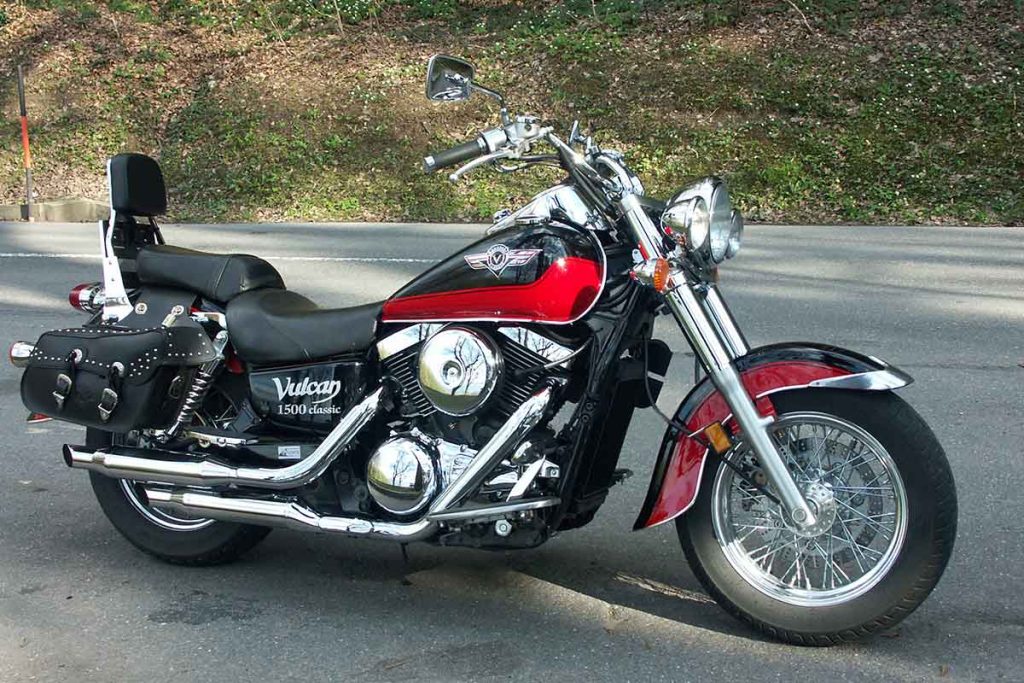
The performance version of the Vulcan 1500 series was the 1500 Mean Streak. It had the same basic engine, but with larger valves and larger fuel injection throttle bottles. It also came with new camshafts, high compression pistons, and a modified combustion chamber. These features led to the higher horsepower of 72 at 5500 rpm and 90ft-lb at 3000 rpm. The 1500 Mean Streak was produced starting from 2002 to 2004. Thereafter, the production of the 1600 Mean Streak took over.
Specifications
- Engine type: liquid-cooled, 4-stroke, 4-valve cylinder head, SOHC, 1470 cc, V-twin
- Bore x stroke: 4 inches x 3.5 inches
- Compression ratio: 9.0:1
- Horsepower: 64/4700 KW (hp)/rpm
- Torque: 84.6/2800 lb-ft/rpm
- Fuel system: Electronic injection
5. Vulcan 800 series: 1995- 2006
The first of the Kawasaki Vulcan 800 series was debuted in 1995. It was also known as the VN800A and had a Softail design. It also featured a large front wheel and a bobbed rear fender. The engine was a liquid-cooled V-twin with four valves per cylinder and a capacity of 805 ccs. The engine, in addition to the mentioned features, included a five-speed transmission with an optional slap shift.
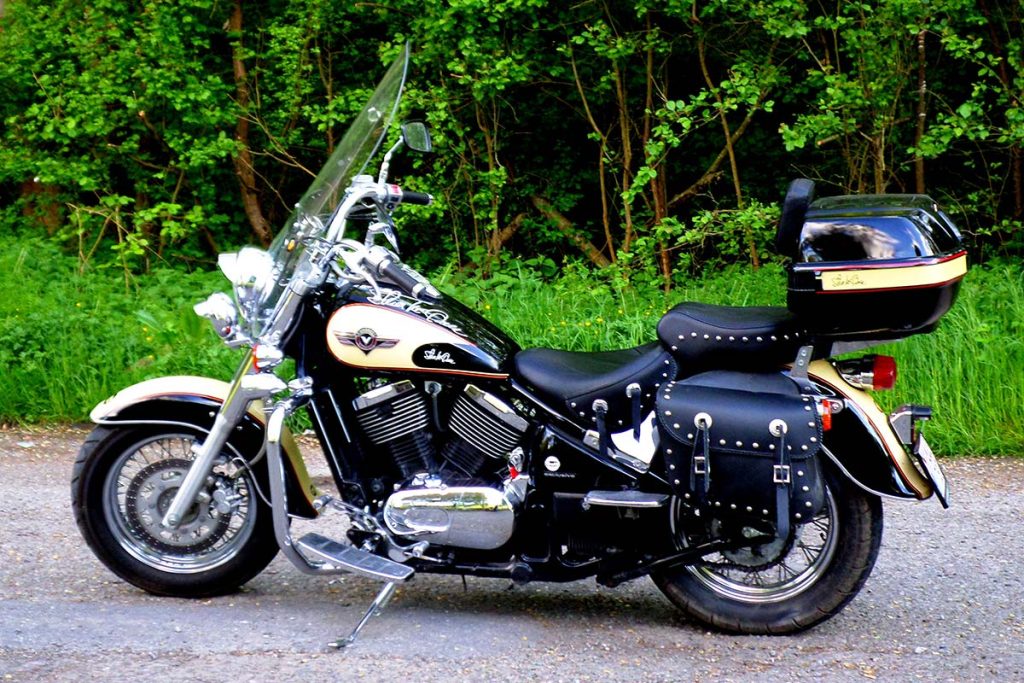
In 1996, a year after the debut of the first Vulcan 800 (VN800A), a retro-styled model (VN800B) was introduced to the public. It was built with full fenders and 16” front and rear wheels. The production of both the VN800A and VN800B models was discontinued in 2006. This was after the introduction of the VN900 model.
Specifications
- Engine type: 4-stroke, liquid-cooled, 4 valves per cylinder, SOHC, 805 ccs, V-twin
- Bore x stroke: 3.46 inches x 2.60 inches
- Compression ratio: 9.5:1
- Horsepower: 56/7000 KW (hp)/rpm
- Torque: 47.2/3300 lb-ft/rpm
- Fuel system: Keihin CVK36 Carburetor
6. Vulcan 1600 series: 2002 -2009
This Vulcan series came in three variations which were the Nomad, Classic, and Mean Streak. All the variations had SOHC liquid-cooled V-twin engines with 1,552 ccs and 5-speed transmission. The production of the Vulcan 1600 series was discontinued in 2009 when Kawasaki upgraded to the 1700 series.
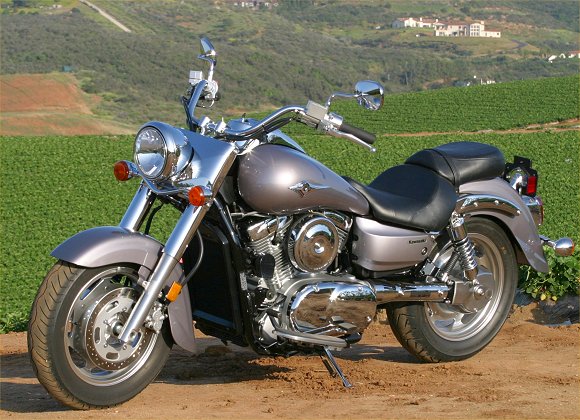
Specifications
- Engine type: SOHC, 1552 cc, 4-stroke, 4 valve cylinder head, V-twin
- Bore x stroke: 4 inches x 3.7 inches
- Compression ratio: 9:1
- Horsepower: 93/2500 lb-ft/rpm
- Torque: 93/2500 lb-ft/rpm
- Fuel system: Electronic injection
7. Vulcan 900 series: 2006 – present
The Vulcan 900 series comes in three different variations; Classic, Vulcan 900 Classic LT, and Vulcan 900 Custom. All three variations have liquid-cooled, V-twin SOHC engines with 903 cc. They also have a belt drive and a four-valve cylinder head. Their tank-mounted speedometer has caution lamps and turns signal indicators.
The Vulcan Classic 900 LT has features similar to the Classic model, but with some additional features, including the passenger backrest, saddlebags, and studded accents. The Classic 900 LT, has an improved engine to cover long distances and carry a lot of luggage. The Vulcan 900 Custom, on the other hand, is designed to look like a stock bike, but with upgraded aesthetic details, customization, and accessories.
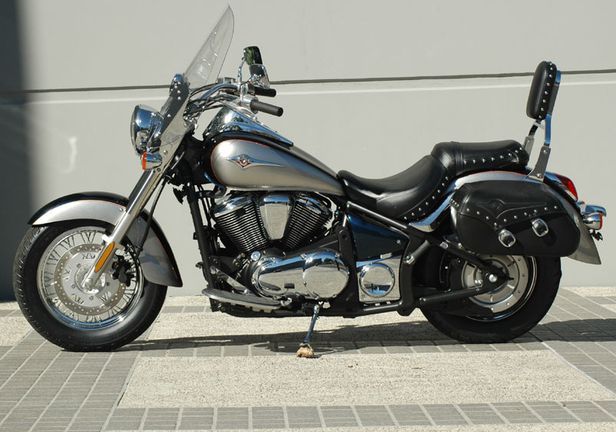
The upgrades of this series have been minimized to maintain the popular aspects of the original Vulcan 900.
Specifications
- Engine type: 4-stroke, V-twin, 903 cc
- Bore x stroke: 3.5 inches x 2.9 inches
- Compression ratio: 9.5:1
- Horsepower: 50/5700 KW (hp)/rpm
- Torque: 58/3700 lb-ft/rpm
- Fuel system: EFI, dual 34mm throttle bodies
Also Read: Top 7 Best Drift Cars You Should Know About
8. Vulcan 1700 series: 2009 – present
The Vulcan 1700 series was first released in 2009 to replace the Vulcan 1600 series. Motorcycles of this series exhibit a larger displacement engine, ride-by-wire throttle, and a six-speed transmission. Currently, the Vulcan 1700 comes in two variations; the Voyager and the Vaquero.
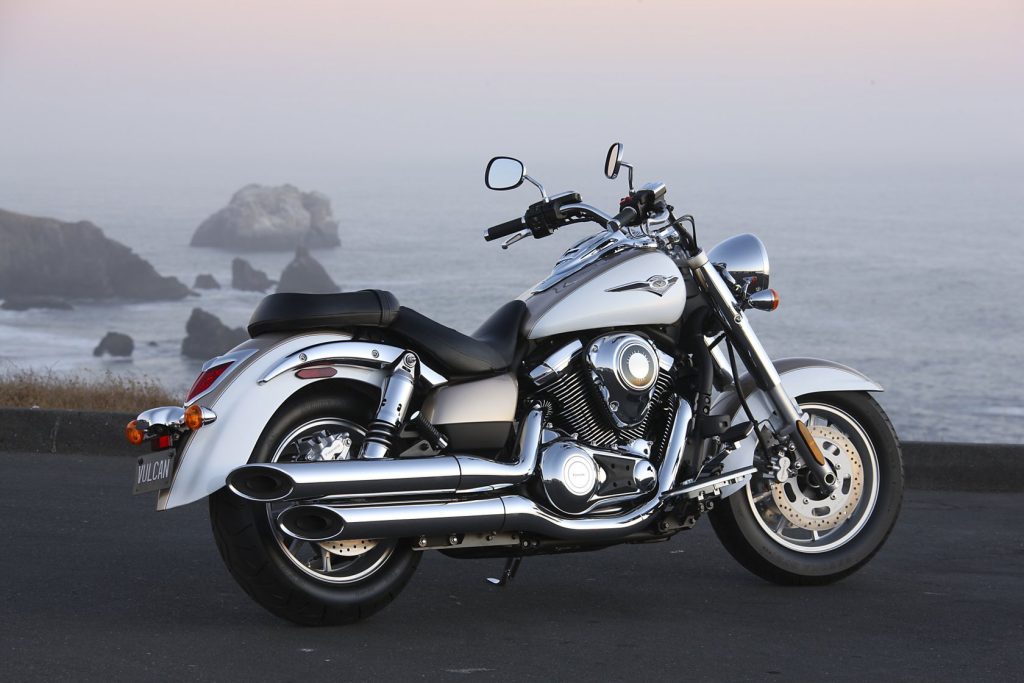
This series (except the Voyagers and Vaqueros) features a 52-degree SOHC, fuel-injected liquid-cooled V-twin engine with 1,700 ccs and a six-speed transmission. They also have a ride-by-wire throttle, a windshield, and saddlebags.
Vulcan 1700 Nomad specifications
- Engine type: Liquid-cooled, 4-stroke, 1700 cc, V-twin
- Bore x stroke: 4.0 inches x 4.1 inches
- Compression ratio: 9.5:1
- Horsepower: 73/5000 KW (hp)/rpm
- Torque: 100/2750 lb-ft/rpm
- Fuel system: digital fuel injection, dual 42mm throttle bodies
9. Vulcan 2000 series: 2006 – 2010
The Vulcan 2000 series was first introduced in 2006. It came in three versions; Standard, Classic, and Classic LT. They are viewed as a perfect blend of both power and style and have the largest engines in Kawasaki’s history. All the models exhibit a liquid-cooled, 2053 cc, V-twin engine.

Specifications
- Engine type: 4-stroke, liquid-cooled, 4 valve cylinder head, 2053 cc, V-twin
- Bore x stroke: 4.1 inches x 4.9 inches
- Compression ratio: 9.5:1
- Horsepower: 103/4080 KW (hp)/rpm
- Torque: 141/3000 lb-ft/rpm
- Fuel system: Electronic injection
10. Vulcan S series: 2015 – present
The Vulcan S series which was first introduced in 2015 comes in three models; Vulcan S, Vulcan S ABS, and Vulcan S ABS Café. They share a Ninja-derived power and have a 650 cc, twin engine. They have a total low weight and are comfortable.
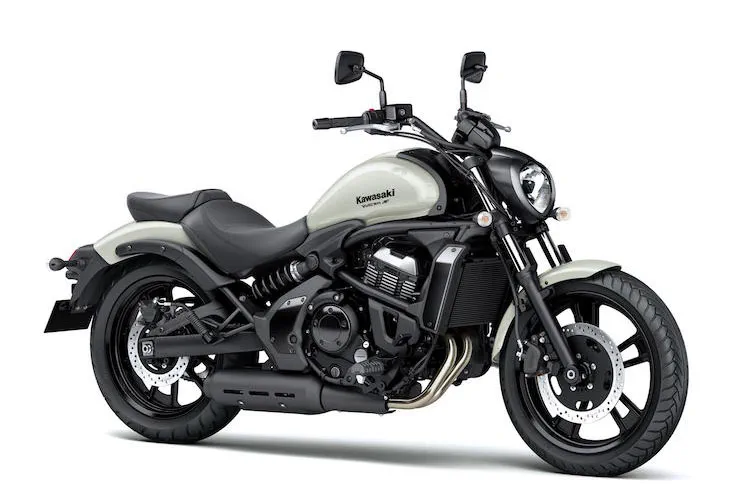
Specifications
- Engine type: 649 ccs, 4-stroke, liquid-cooled, DOHC, 2-cylinder, twin
- Bore x stroke: 3.3 inches x 2.4 inches
- Compression ratio: 10.8:1
- Horsepower: 61.00 HP (44.5 KW)/7500 rpm
- Torque: 46.3 lb-ft/6000 rpm
- Fuel system: DFI 38mm 2 throttle bodies, with sub-throttle valves
Those are the various Vulcan models that have ever existed. The details will help you choose the right one.









